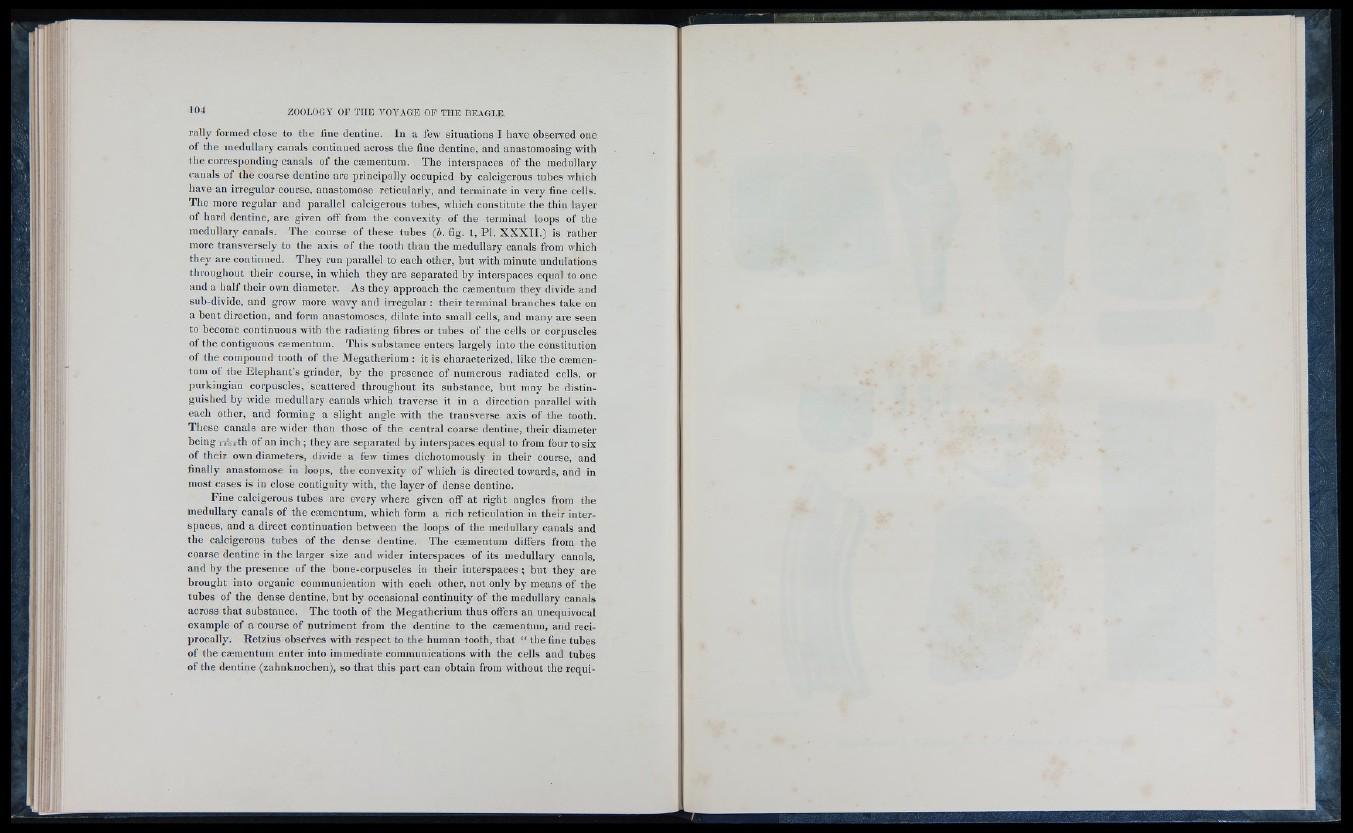
rally formed close to the fine dentine. In a few situations I have observed one
o f the medullary canals continued across the fine dentine, and anastomosing with
the corresponding canals o f the cæmentum. The interspaces o f the inediillaiy
canals o f the coarse dentine are principally occupied by calcigerous tubes which
have an irregular course, anastomose reticularly, and terminate in very fine cells.
The more regular and parallel calcigerous tubes, which constitute the thin layer
o f hard dentine, are given off from the convexity o f the terminal loops o f the
medullary canals. The course o f these tubes (A. fig. I, PI. X X X I I .) is rather
more transversely to the a x is o f the tooth than tlie medullary canals from which
they are continued. T h ey run parallel to each other, but with minute undulations
througlioul tlieir course, in M’hich they are separated by interspaces equal to one
and a half their own diameter. As they approach the cæmentum they divide and
sub-divide, and grow more wavy and irregular : their terminal branches take on
a bent direction, and form anastomoses, dilate into small cells, and many are seen
to become continuous with the radiating fibres or tubes o f the ce lls or corpuscles
o f the contiguous cæmentum. This substance enters largely into the constitution
o f the compound tooth o f the Megatherium : it is characterized, like the cæmentum
o f the Eleph an t’s grinder, by the presence o f numerous radiated cells, or
purkingian corpuscles, scattered throughout its substance, but may be distinguished
by wide medullary canals which traverse it in a direction parallel with
each other, and forming a slight angle with the transverse axis o f the tooth.
Th ese canals are wider than those o f the central coarse dentine, their diameter
being rs'outh o f an inch ; they are separated by interspaces equal to from four to six
o f their own diameters, divide a few times dichotomously in their course, and
finally anastomose in loops, the convexity o f which is directed towards, and in
most cases is in close contiguity with, the layer o f dense dentine.
Fine calcigerous tubes are every where given o ff at right angles from the
medullary canals o f the cæmentum, which form a rich reticulation in their interspaces,
and a direct continuation between the loops o f the medullary canals and
the calcigerous tubes o f the dense dentine. The cæmentum differs from the
coarse dentine in the larger size and wider interspaces o f its medullary canals,
and b y the presence o f the bone-corpuscles in their interspaces ; but they are
brought into organic communication with each other, not only by means o f the
tubes o f the dense dentine, but by occasional continuity o f the medullary canals
across that substance. The tooth of the Megatherium thus offers an unequivocal
example o f a course o f nutriment from the dentine to the cæmentum, and reciprocally.
Retzius obseives with respect to the human tooth, that “ the fine tubes
o f the cæmentum enter into immediate communications with the ce lls and tubes
o f tlie dentine (zahnknochen), so that this part can obtain from without the rcqui